
Otsego County is a county in the U.S. state of New York. As of the 2020 census, the population was 58,524. The county seat is Cooperstown. The name Otsego is from a Mohawk or Oneida word meaning "place of the rock."
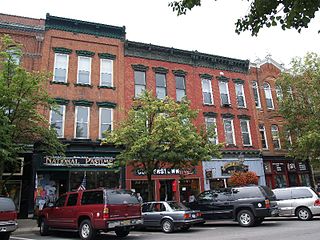
Cooperstown is a village in and county seat of Otsego County, New York, United States. Most of the village lies within the town of Otsego, but some of the eastern part is in the town of Middlefield. Located at the foot of Otsego Lake in the Central New York Region, Cooperstown is approximately 60 miles southwest of Albany, 67 mi (108 km) southeast of Syracuse and 145 mi (233 km) northwest of New York City. The population of the village was 1,852 as of the 2010 census.
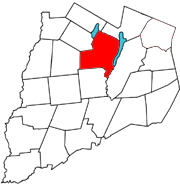
Otsego is a town in the north-central part of Otsego County, New York, United States. The population was 3,900 at the 2010 census. The town is named after Lake Otsego, which forms part of the town's eastern border.
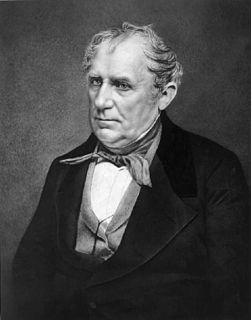
James Fenimore Cooper was an American writer of the first half of the 19th century. His historical romances depicting colonist and Indigenous characters from the 17th to the 19th centuries created a unique form of American literature. He lived much of his boyhood and the last fifteen years of life in Cooperstown, New York, which was founded by his father William Cooper on property that he owned. Cooper became a member of the Episcopal Church shortly before his death and contributed generously to it. He attended Yale University for three years, where he was a member of the Linonian Society.
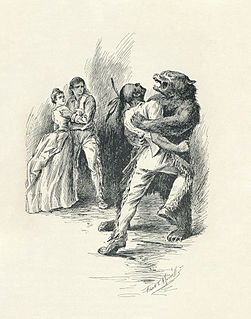
The Last of the Mohicans: A Narrative of 1757 is a historical romance written by James Fenimore Cooper in 1826.

Otsego Lake is a 4,046-acre (16.37 km2) lake located in Otsego County in the U.S. state of New York. It is the source of the Susquehanna River and largest lake in Otsego County. The Village of Cooperstown is located at the lake's southern end. Glimmerglass State Park is located on the lake's northeastern shore, and includes Hyde Hall, a large mansion constructed in 1817, that overlooks the lake. The Glimmerglass Opera, opened in June 1987, is located on the western shore.

William Cooper was an American merchant, land speculator and developer, the founder of Cooperstown, New York. A politician, he was appointed as a county judge and later served two terms in the United States Congress, representing Otsego County and central New York. He was the father of James Fenimore Cooper, who became a noted writer of historical novels related to the New York frontier.

The Leatherstocking Tales is a series of five novels by American writer James Fenimore Cooper, set in the eighteenth-century era of development in the primarily former Iroquois areas in central New York. Each novel features Natty Bumppo, a frontiersman known to European-American settlers as "Leatherstocking", "The Pathfinder", and "the trapper". Native Americans call him "Deerslayer", "La Longue Carabine", and "Hawkeye".

The Fenimore Art Museum is a museum located in Cooperstown, New York on the west side of Otsego Lake. Collection strengths include the Eugene and Clare Thaw Collection of American Indian Art, American fine and folk art, 19th and early 20th century photography, as well as rare books and manuscripts. The museum's mission is to connect its audience to American and New York State cultural heritage by organizing exhibits and public programs that "engage, delight and inspire."

The Farmers' Museum is located in Cooperstown, New York, and is one of the best-known attractions in the town.

The Deerslayer, or The First War-Path (1841) was James Fenimore Cooper's last novel in his Leatherstocking Tales. Its 1740-1745 time period makes it the first installment chronologically and in the lifetime of the hero of the Leatherstocking tales, Natty Bumppo. The novel's setting on Otsego Lake in central, upstate New York, is the same as that of The Pioneers, the first of the Leatherstocking Tales to be published (1823). The Deerslayer is considered to be the prequel to the rest of the series. Fenimore Cooper begins his work by relating the astonishing advance of civilization in New York State, which is the setting of four of his five Leatherstocking Tales.
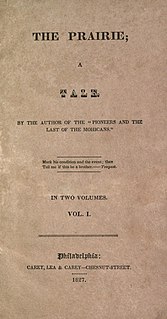
The Prairie: A Tale (1827) is a novel by James Fenimore Cooper, the third novel written by him featuring Natty Bumppo. His fictitious frontier hero Bumppo is never called by his name, but is instead referred to as "the trapper" or "the old man." Chronologically The Prairie is the fifth and final installment of the Leatherstocking Tales, though it was published before The Pathfinder (1840) and The Deerslayer (1841). It depicts Natty in the final year of his life still proving helpful to people in distress on the American frontier. The book frequently references characters and events from the two books previously published in the Leatherstocking Tales as well as the two which Cooper wouldn't write for more than ten years. Continuity with The Last of the Mohicans is indicated by the appearance of the grandson of Duncan and Alice Heyward, as well as the noble Pawnee chief Hard Heart, whose name is English for the French nickname for the Delaware, le Coeur-dur.

Otsego Hall was a house in Cooperstown, New York, United States built by William Cooper, founder of the town. Construction started in 1796 and was completed by 1799 in the Federal style. For many years, it was the manor house of Cooper's landed estate, and was the one of the largest private residences in central New York. Cooper had moved his family to the settlement in 1790, and his son James Fenimore Cooper, who became an author, also lived in the house.

The Deerslayer is a 1957 American Western film in CinemaScope and Color by De Luxe, directed by Kurt Neumann and written by Carroll Young, Neumann and an uncredited Dalton Trumbo. The film stars Lex Barker, Rita Moreno, Forrest Tucker, Cathy O'Donnell, Jay C. Flippen and Carlos Rivas. It is based on the 1841 novel The Deerslayer by James Fenimore Cooper. The film was released on September 10, 1957 by 20th Century-Fox.
Red House Hill is a mountain in the Central New York Region of New York. It is located south-southwest of the Hamlet of Springfield Center, New York, west of Hutter Point and Six Mile Point of Otsego Lake, and southeast of Rum Hill. Mohican Brook flows eastward along the southern edge of the hill.
Six Mile Point also known as Hickory Grove is a geographic cape extending into Otsego Lake in the Town of Otsego north of Cooperstown, New York. Six Mile Point is the location in The Deerslayer that Natty Bumppo makes an unsuccessful effort to escape from the Hurons.
Gravelly Point is a geographic cape extending into Otsego Lake in the Town of Middlefield in Otsego County in the U.S. State of New York. It is located on the east side of the lake, roughly 5 miles (8.0 km) north of the Village of Cooperstown. The point is not accessible from land but only the lake.
Peggs Point is a geographic cape extending into Otsego Lake in the Town of Middlefield in Otsego County in the U.S. State of New York. It is located on the east shore of the lake north of the Village of Cooperstown. The point forms the southern edge of Hyde Bay which is located north.

Blackbird Bay is a bay located on Otsego Lake. It is located in the Village of Cooperstown in the U.S. state of New York. The historic Otesaga Hotel is located on the shore as well as the Leatherstocking Golf Course.

Home as Found (1838) is a novel written by James Fenimore Cooper. It takes place in the fictional town of Templeton, which is modeled after the Village of Cooperstown. In the novel the Effingham family moves back to Templeton from New York City.
















